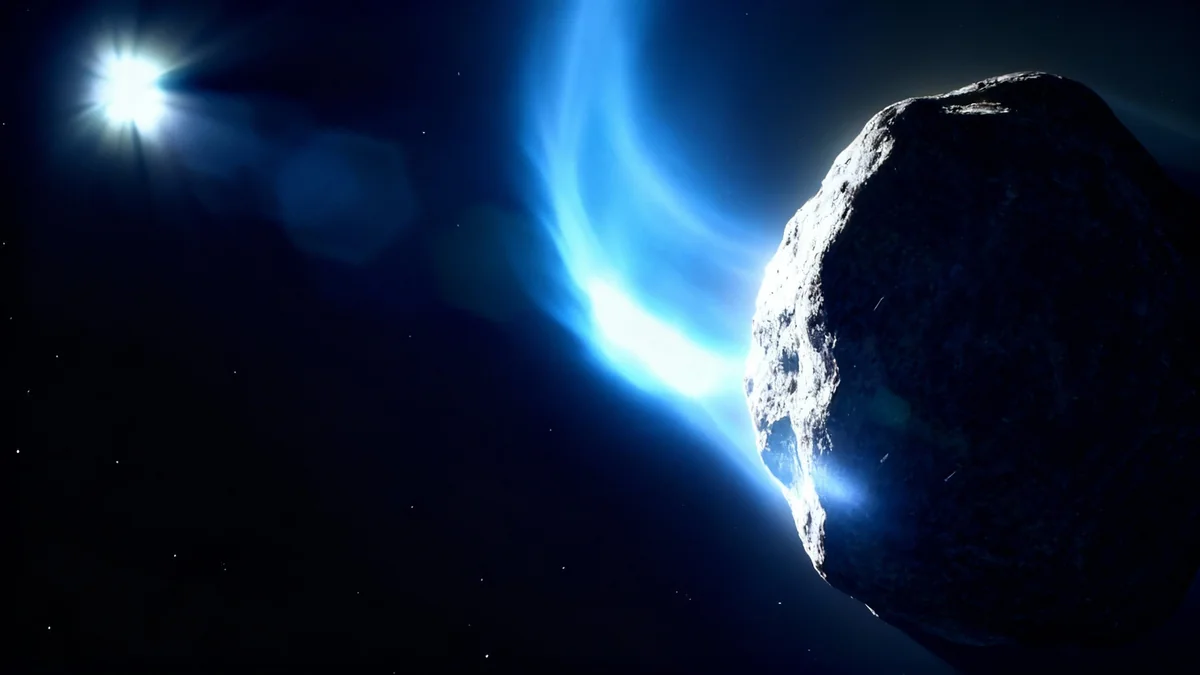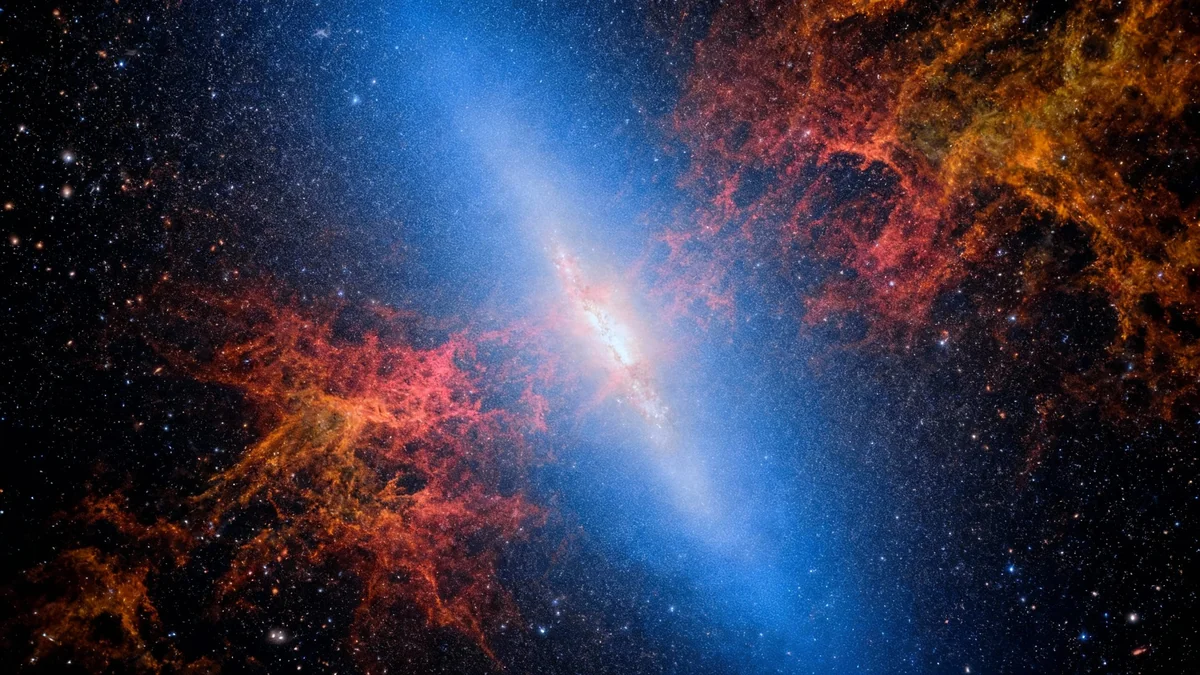NASA has launched a new mission designed to create a comprehensive 3D map of the universe. The Spectro-Photometer for the History of the Universe, Epoch of Reionization and Ices Explorer, or SPHEREx, will survey the entire sky to gather data on more than 450 million galaxies, aiming to answer fundamental questions about cosmic origins.
Over its two-year mission, the space telescope will use novel technology to study the moments immediately following the big bang, investigate how galaxies form and evolve, and search for the building blocks of life, such as water ice, in our own galaxy.
Key Takeaways
- NASA's SPHEREx mission will create an all-sky 3D map charting over 450 million galaxies.
- The primary goals are to understand cosmic inflation, galaxy formation, and the origins of water in the universe.
- SPHEREx uses first-of-its-kind spectroscopy to capture infrared light in 102 different colors across the entire sky.
- The telescope features an innovative passive cooling system, allowing it to operate at -350°F in low Earth orbit.
- Data from the mission will be made publicly available to scientists worldwide, creating a lasting resource for astronomy.
Charting the Universe in Three Dimensions
NASA's SPHEREx mission, which launched from Vandenberg Space Force Base in California, has begun a 25-month survey to map the entire celestial sky. The project represents a significant step in observational cosmology, moving beyond two-dimensional images to create a vast three-dimensional chart of the cosmos.
By plotting the positions of hundreds of millions of galaxies, scientists hope to gain new insights into the fundamental structure of the universe. John Wisniewski, the program scientist for the SPHEREx mission, highlighted the project's focus on origins.
"SPHEREx is all about origins. It’s mapping out the three-dimensional distribution of hundreds of millions of galaxies in our universe, which is going to allow us to answer a fundamental question: What caused inflation?"
The mission's data will provide an unprecedented view of the large-scale structure of the universe, offering clues that have been previously unavailable to researchers.
The Three Pillars of SPHEREx Science
The SPHEREx mission is structured around three primary scientific objectives, each addressing a critical question about how the universe and its contents came to be.
Investigating Cosmic Inflation
The first goal is to understand a phenomenon known as inflation. This theory suggests that in the first fraction of a second after the big bang, the universe expanded exponentially at an incredible rate. According to astrophysicists, the universe grew by a factor of a trillion-trillion in less than the blink of an eye.
SPHEREx will study the distribution of galaxies to look for patterns left behind by this initial expansion. "Galaxies cluster, and clustering was set up in the early universe," explained Jamie Bock, SPHEREx’s principal investigator. "If we study the distribution of galaxies in three dimensions, how they cluster can tell us something about the process of inflation."
Understanding Galaxy Formation
The mission's second objective is to learn how galaxies have grown and evolved over cosmic history. To do this, SPHEREx will measure the faint, diffuse glow of all light from outside our own galaxy, known as the extragalactic background light.
What is Extragalactic Background Light?
This faint light is the accumulated radiation from every star that has ever existed throughout the observable universe. By studying its fluctuations, scientists can reconstruct the history of light production and, by extension, the history of star and galaxy formation over billions of years.
"That glow encodes all emissions over cosmic history," Bock stated. "So, by studying it, we can work out in an independent way what the history of light production was."
Searching for the Origins of Life
The third major goal brings the focus closer to home. SPHEREx will take a detailed inventory of water ice and frozen organic molecules within the Milky Way. These substances are considered essential ingredients for life as we know it.
Scientists believe that water on Earth may have originated from ice that formed in interstellar clouds. By mapping the location and abundance of these ices in star-forming regions and around young stars, SPHEREx will help explain the processes that deliver water to planetary systems like our own.
Innovative Technology for a Unique Mission
To achieve its ambitious goals, SPHEREx relies on specially designed technology that has never before been deployed for an all-sky survey. Its ability to observe in infrared light requires the telescope to be extremely cold.
Passive Cooling in Low Earth Orbit
SPHEREx operates in a low Earth orbit, approximately 400 miles above the planet. At this altitude, heat from the Sun and Earth can interfere with sensitive infrared detectors. To counteract this, the telescope must be cooled to about -350 degrees Fahrenheit.
Instead of using finite liquid coolants, SPHEREx uses a passive cooling system. It features three large, concentric cones that shield the telescope from solar and terrestrial heat. "The martini glass — what we call photon shields — is basically reflecting earthshine and sunshine away from the telescope," Wisniewski said. This design allows the telescope to radiate its own heat into deep space, maintaining its frigid operational temperature.
Mission by the Numbers
- Duration: 25 months of survey operations
- Galaxies to be mapped: Over 450 million
- Orbits: More than 11,000
- Orbits per day: Approximately 14.5
- Infrared Colors: 102 distinct wavelengths
Advanced Spectroscopy with Linear-Variable Filters
The core of the mission is spectroscopy—the technique of splitting light into its component colors. SPHEREx achieves this with an efficient method using linear-variable filters. These specialized filters allow the telescope to capture different wavelengths of infrared light depending on where an object falls on its detector.
Beth Fabinsky, the SPHEREx project manager, described the process: "If we point at something, we get one color. If we nudge our pointing a tiny bit, we get a slightly different color. That’s how we collect multiple spectra for a single object in the sky." This technique allows SPHEREx to build its multi-color map of the sky quickly and without complex moving parts.
A Public Resource for Future Astronomy
Over the course of its mission, SPHEREx will circle the Earth thousands of times, capturing hundreds of thousands of images. These will be stitched together to create four distinct maps of the entire sky, each providing a wealth of information.
NASA has committed to making these datasets fully public. This will provide astronomers around the world with an invaluable resource for decades to come. The maps will contain encyclopedic data on stars, asteroids, and hundreds of millions of galaxies.
"It’s going to be a literal treasure trove for decades for the current and next generation of astronomers," Wisniewski noted. The mission's focus on fundamental questions about our origins resonates beyond the scientific community.
As principal investigator Jamie Bock concluded, "I can’t think of a single person on Earth who doesn’t want to know where we come from and how it all started. It’s a natural human question." SPHEREx aims to provide some of the most profound answers yet.





